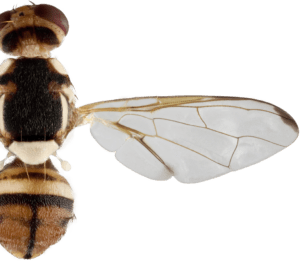Bactrocera zonata
South and Southeast Asia
mangoes, peaches, guava, apples
8-12 mm long
Bactrocera zonata, also called mango fruit fly, is also a species of insect belonging to the family Tephritidae. It is native to South and Southeast Asia and it is a major pest of mangoes and other fruits and can cause significant losses to fruit growers.
While both insects are similar in many ways, there are some key differences between them, such as their appearance. Bactrocera zonata is slightly larger than Bactrocera dorsalis, with an adult fly measuring 8-12 mm long compared to 8-10 mm for B. dorsalis. Bactrocera zonata also has a more yellow-brown body color with black markings on the thorax and wings, while B. dorsalis has a brownish-yellow body with similar black markings.
Bactrocera zonata and Bactrocera dorsalis are thus closely related, but have some important differences that must be taken into account in effective pest control.
For more information on the Bactrocera zonata, see its datasheet on the Homepage of the European and Mediterannean Plant Protection Organization or on the CABI Digital Library.

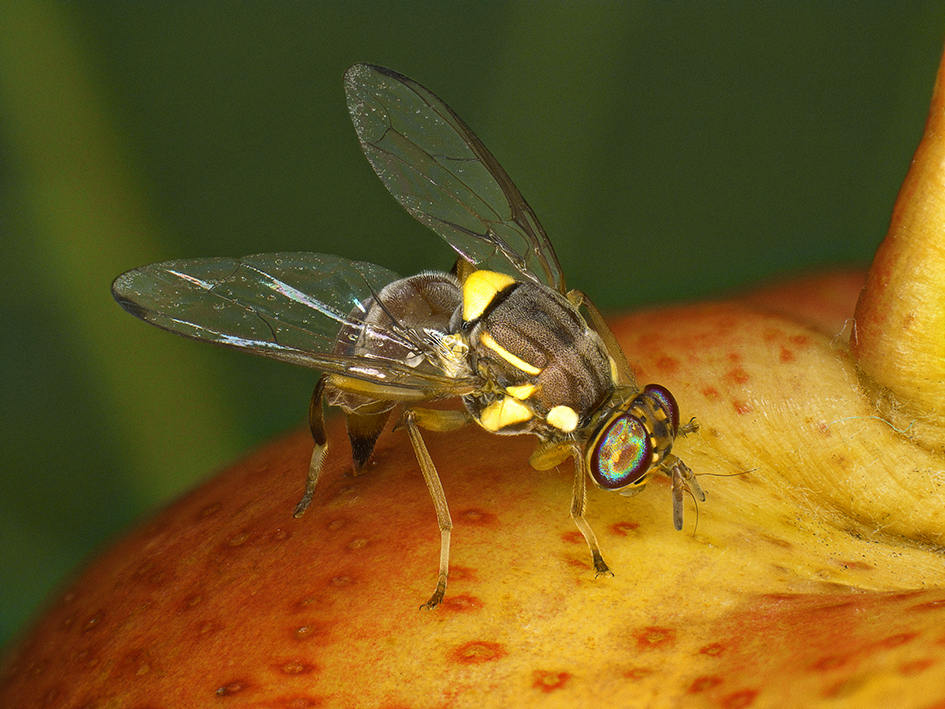
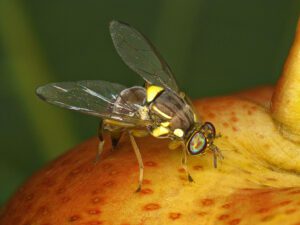

Bactrocera dorsalis
Southeast Asia
citrus, sonte fruits, berries, melons
8-10 mm long
Bactrocera dorsalis, also known as the oriental fruit fly, is a species of insect in the family Tephritidae. It is native to Southeast Asia, but has been introduced to many other parts of the world, where it has become a major pest of fruit crops. The adult fly is about 8-10 mm long and has a brownish-yellow body with black markings on the thorax and wings. The larvae are cream-colored and legless, and can be found inside infested fruit.
Bactrocera dorsalis feeds on a wide variety of fruits, including citrus, stone fruits, berries, and melons. The females lay their eggs inside the fruit, and the larvae hatch and feed on the fruit from the inside, causing it to rot and become unmarketable. This can result in significant losses for fruit and vegetable growers.
REACT will develop and test genetic techniques offering a potential way to control pests like Bactrocera dorsalis without the need for chemical insecticides, which can have negative effects on the environment and human health. One approach is to use genetic engineering to create sterile male flies. These males can be released into the wild, where they will mate with wild females but produce no offspring. This can help to reduce the population size of the pest over time.
For more information on the Bactrocera dorsalis see its datasheet on the Homepage of the European and Mediterannean Plant Protection Organization or on the CABI Digital Library.
Image credits to Fruit Fly ID Australia
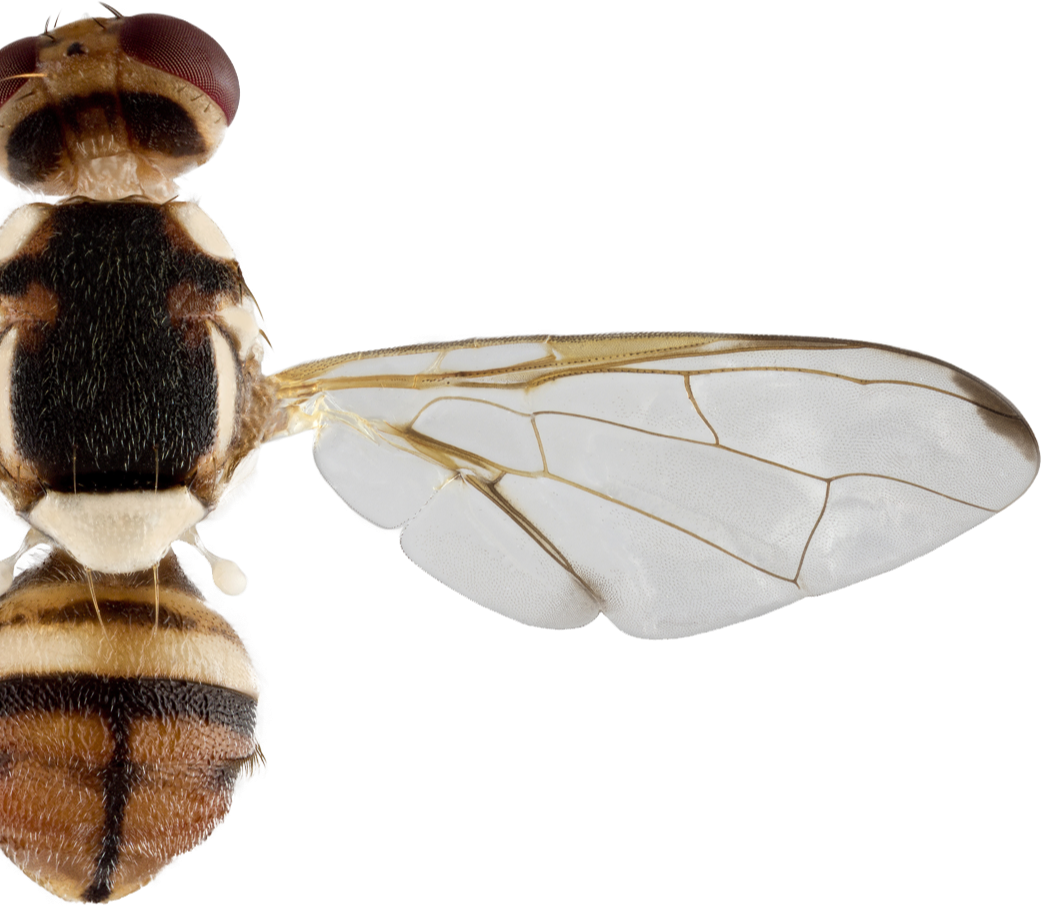
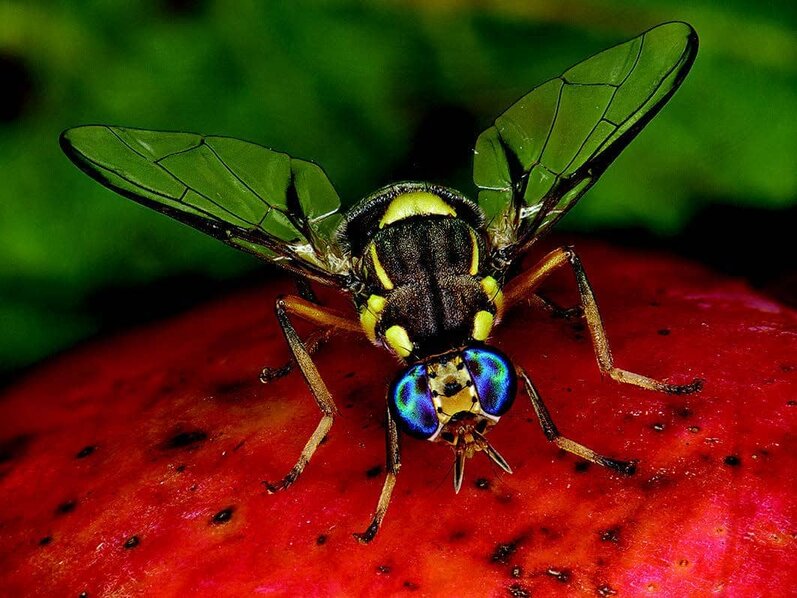


Bactrocera dorsalis
Southeast Asia
citrus, stone fruits, berries, melons
8-10 mm long
Bactrocera dorsalis, also known as the oriental fruit fly, is a species of insect in the family Tephritidae. It is native to Southeast Asia, but has been introduced to many other parts of the world, where it has become a major pest of fruit crops. The adult fly is about 8-10 mm long and has a brownish-yellow body with black markings on the thorax and wings. The larvae are cream-colored and legless, and can be found inside infested fruit.
Bactrocera dorsalis feeds on a wide variety of fruits, including citrus, stone fruits, berries, and melons. The females lay their eggs inside the fruit, and the larvae hatch and feed on the fruit from the inside, causing it to rot and become unmarketable. This can result in significant losses for fruit and vegetable growers.
REACT will develop and test genetic techniques offering a potential way to control pests like Bactrocera dorsalis without the need for chemical insecticides, which can have negative effects on the environment and human health. One approach is to use genetic engineering to create sterile male flies. These males can be released into the wild, where they will mate with wild females but produce no offspring. This can help to reduce the population size of the pest over time.
For more information on the Bactrocera dorsalis see its datasheet on the Homepage of the European and Mediterannean Plant Protection Organization or on the CABI Digital Library.

